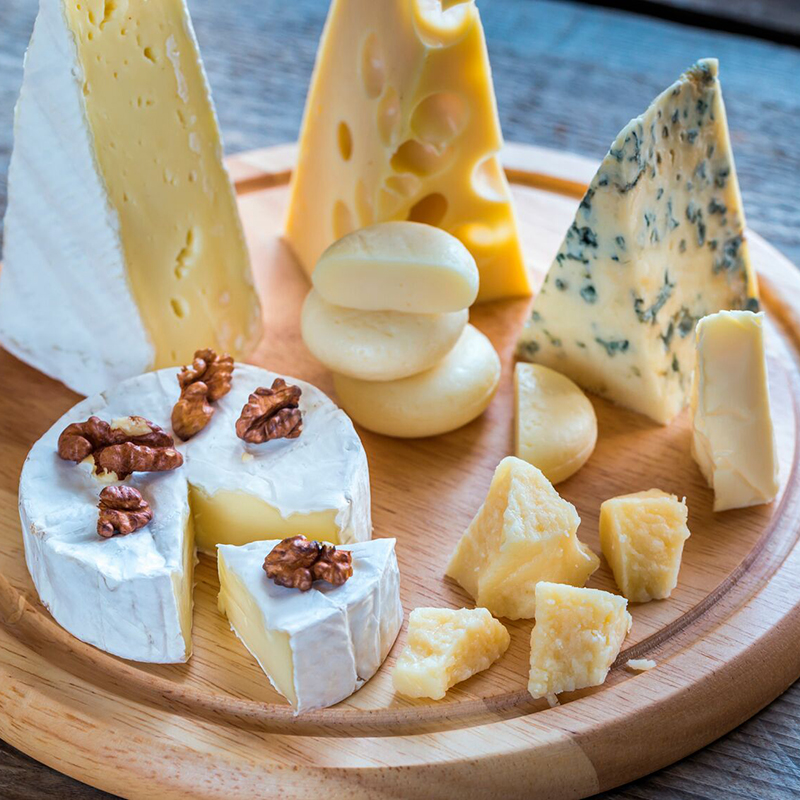From cheese addiction to whether cheese is better for you, we reveal the truth behind popular cheese misconceptions. A series of benefits of cheesemaking people want to know information on online cheesemaking course Jakarta and also online private cheese. Are you interested? For that you need to know a series of benefits of cheese first.
Cheese is a good source of protein and calcium. But often cheese is high in saturated fat and salt, which means eating too much of it can lead to cholesterol, high blood pressure and an increased risk of cardiovascular disease (CVD). In the UK, the standard serving size is 30g (the size of a small matchbox or two and a half dominoes).
Your daily diet should feature three 30g servings of dairy products, and cheese alone will not suffice. It’s okay to enjoy it wisely, here’s how:
Myths about Cheese and Online Cheesemaking Course Jakarta
1. Myth: You should give up cheese completely.
Reality: You don’t have to eliminate cheese from your diet, but if you have high cholesterol or blood pressure, use high-fat cheese sparingly. One serving (30g) of cheese provides 7 percent of your daily calories, and there may be more salt in a serving of cheddar than a packet of chips.
Keep the portion of cheese small and weigh it down to reduce the temptation. Some types of roquefort, halloumi, feta and single cheese are saltier than seawater. Using low-fat cheeses such as mozzarella, feta, cottage cheese or low-fat cheese will provide less saturated fat.
Cheese contains calcium and protein, so it’s OK in moderation, but remember; Low-fat yogurt, canned fish, tofu, lentils, and beans are also good sources of calcium and protein.
Cooking from scratch also helps, as snacks often contain higher-fat cheese. Take some time to stop and ask if your dish really calls for cheese.
2. Myth: Low-fat cheese is trash.
Reality: It is a common misconception that reducing fat equals reducing taste. Experiment with different brands to find one you like. Remember, reduced fat is not necessarily low fat, it just means 25 percent less fat than the original. Check the label to see if the fat content is high (more than 17.5g/100g), moderate (3.1-17.5g/100g) or low (3g or less/100g).
You can also cook and bake with low-fat cheese, although hard, low-fat cheeses may take longer to melt. Grate until smooth and melt over low heat. Sometimes this cheese gives off a crust during baking, so add the cheese at the end of the baking time.
3. Myth: You are addicted to cheese.
Reality: Research on cheese shows that large amounts of the protein casein found in dairy products and highly concentrated in cheese releases opiates called casomorphins when digested. This can signal comfort to the brain indirectly through hormones.
However, a review by the European Food Safety Authority questioned whether casomorphins could be transferred via the gut into the bloodstream or the brain. If you eat a lot of cheese, you may get used to the salty taste or have a habit of eating it at certain times, so watch your diet and reduce your intake gradually.
Cheese Reality
4. Myth: You need cheese to make your bones strong.
Reality: Cheese is a good source of calcium. A 30g serving of cheddar provides more than a quarter of an adult’s daily requirement. However, other dairy products, such as yogurt and milk, are just as good for the bones and much lower in fat and salt.
Cheese also contains small amounts of vitamin D, a fat-soluble vitamin that helps us absorb calcium from food. Low-fat dairy products like semi-skimmed milk don’t contain as much vitamin D as full-fat cheese, but eggs, oily fish, and fortified cereals (as long as they’re low in sugar) are better sources.
5. Myth: Goat cheese is better for you than cow cheese.
Reality: Soft goat cheese contains about 26g of fat per 100g, similar to brie and edam, and as much salt as camembert. Goat cheese is considered a high-fat product, mozzarella and ricotta are lower in fat, as is feta which is traditionally made from sheep’s milk or goat’s milk.
Goat cheese is considered better for people with lactose intolerance than soft cheese made from cow’s milk. Goat cheese has a lactose content similar to other semi-soft cheeses such as brie or feta. But it is lower in lactose than wet cheeses like ricotta and cottage cheese. You can make a recipe for goat cheese and onion bruschetta.
6. Myth: The cheese in spaghetti bolognese doesn’t countg.
Reality: Grated cheese on your spaghetti bolognese adds extra calories, saturated fat, and salt. A handful of cheddar (50g) can easily add 230kcal (more than 10 percent of your daily requirement). Two tablespoons of grated cheddar is about 20g. Avoid using your hands to pick up large sprinkles, as you can add too much. For a delicious cheese flavor while avoiding excess calories, use small portions of vintage or cooked cheddar.
7. Myth: Grated cheese is better than sliced.
Reality: It’s true that most people use less cheese when they grate it. A slice of pre-cut cheese usually weighs 20-30g and most people use multiple slices in sandwiches. But if you’re grating cheese into sauce or toast, you’ll want to keep an eye on your portion size because it’s easy to have too much.
Once the cheese is grated, it’s hard to equate to a healthy matchbox-sized portion. Weigh it next time to check how good your guess was. Another common habit is eating cheese knobs that are too small to grate. If this knob weighs 5g and you eat one or two times a week, you will consume extra calories all day every year. Here are seven benefits of cheese and debunked myths so you can find information about online cheesemaking course Jakarta and you can make them anytime you want.
